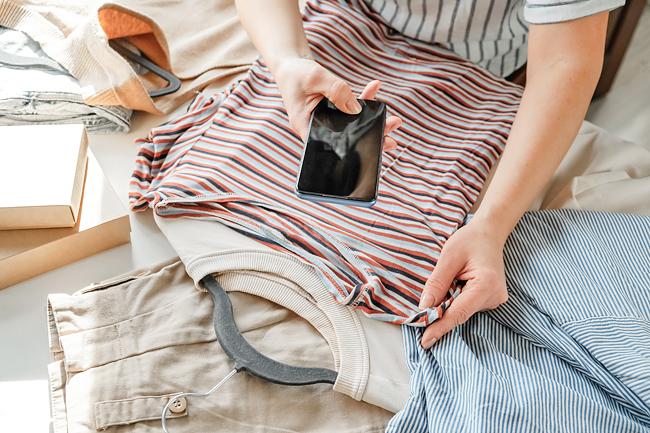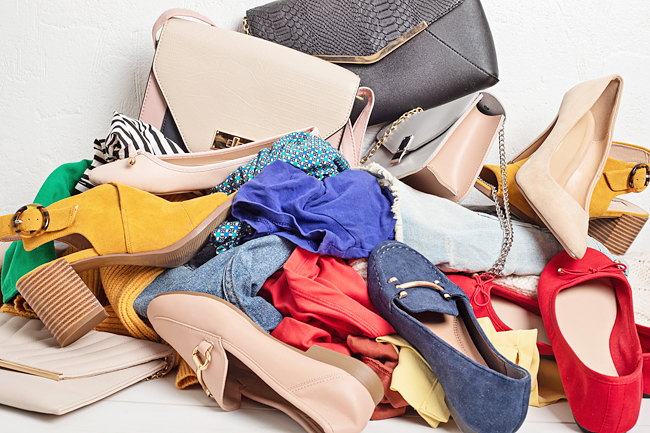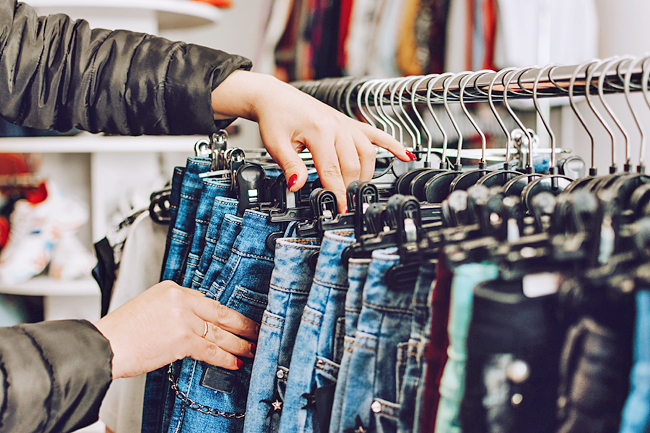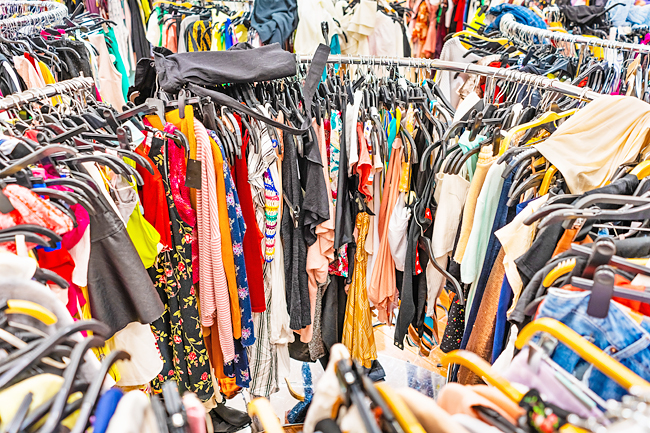AFP – Welcome to the age of the dupe – the imitations, or even copies, of big-brand products, sometimes coming dangerously close to counterfeiting.
It’s a trend that’s growing on social media, to the extent that people are now proudly unearthing these low-cost versions of bags, clothes, shoes and beauty products, drawing their inspiration from the runways.
Not everyone can afford to invest in a Prada bag – far from it – so the average person sometimes turns to similar pieces, similar in style anyway, sold at low-cost prices.
The concept is certainly not new, with imitations being made for several decades, if not more. But it has perhaps never before been a subject of such pride.
The boundary between imitations and counterfeits is sometimes a little blurry, but what’s today known as dupes are everywhere on social networks, much to the delight of users who are only too happy to find low-cost substitutes of products from major luxury brands.
And dupes are to be found in all sectors, from cosmetics to food, but especially in fashion, where these imitations now seem to be everywhere. Welcome to the age of the dupe.




NEARLY THREE BILLION VIEWS
From sneakers, handbags, clothes, perfumes and underwear, to day creams and even to packets of chips, these days, all products seem to have their dupe(s) on social networks.
Just look at the countless videos with the #dupe hashtag, which has no less than 2.8 billion views on TikTok. And that’s without counting its variants: #makeupdupe, #perfumedupe, #skincaredupe, #leggingsdupe, #fashiondupe, #zaradupe, and #fentydupe, each of which has several million views, and offers access to even more precise results.
There’s even a #dupechallenge hashtag, with nearly 60 million views, which involves going to stores, most often major retailers, to look for the best dupes. So while the idea of the dupe might not be new, it’s definitely taking on a new dimension, since finding copies, imitations or products inspired by those from big brands, seems to have become a new sport, and especially a source of pride, whereas it was previously a source of shame, if not embarrassment.
Social network users, TikTok users in the lead, are now going all out to get their hands on cheap clothes and accessories inspired by Prada, Gucci or Fendi, and even by mainstream brands like Skims, Fenty or Zara.
It’s a strong trend that testifies to the countless number of “duplicates” in circulation, and – unexpectedly – to the fact that even the brands that dupe are now themselves being duped.
Amazing, but true.
DUPING THE DUPERS
It is difficult to put a precise date on the beginnings of this dupe craze, but from spring 2022, the ‘Zara vs Shein’ challenge was clearly paving the way for the trend to take off.
With some 60 million views, this challenge involved showing off, side by side, similar – even almost identical – clothes bought at the two fashion giants.
Often, users are happy to have spent two or three times less at Shein, the Chinese behemoth of ultra fast-fashion.
Paradoxically, there are also many videos that showcase the dupes found at Zara inspired by other fashion brands. An endless circle, in short.
The challenge, which served for some to denounce the many copies made by Shein, has, however, mainly resulted in an unprecedented craze for these low-cost versions of products of all kinds.
A handful of social media users have even made this their trademark, with accounts entirely dedicated to dupes in fashion and beauty.
They promise to seek out dupes on the market for others to snap up at will.
On Instagram, there are many such accounts. For example, Dupes Mode, followed by more than 10,000 people, focusses on (very) similar products at (very) different prices.
But it’s not the only one, since these accounts are multiplying at high speed on many social networks, testifying to the growing interest in a market that seems to know no limits… especially when inflation is raging.
‘DOUPE’ – THE JOKE THAT SAYS IT ALL ABOUT THE SCALE OF THE TREND
And the craze is not about to stop, especially since few luxury fashion houses or other major ready-to-wear brands seem to be speaking out against it.
In early January, the user Blythe Snyder went viral on TikTok thanks to a video with over three million views. While shopping at Target, the young woman began listing the number of dupes on the shelves – Skims, Prada, Gucci, Balenciaga, Fendi – emphasising the word “dupe” which she pronounced as an exaggerated “doupe”.
It didn’t take much for other users to follow suit and start heading to well-known retailers to find their own “doupes”, using the same ironic pronunciation.
This game, or perhaps joke, goes some way to highlighting how much dupes are now well and truly everywhere, and that they appeal more than ever to younger generations.
A phenomenon that is growing at a time when fast-fashion and other low-cost fashion brands are being criticised for their lack of ethics, and the mountains of textile waste they generate around the world.
A recent report from the Changing Markets Foundation reveals that, each year, Kenya receives a quarter of a million used items of clothing made of synthetic plastic fibre, too dirty or damaged to be reused, from France alone, leading to “serious sanitary and environmental problems for vulnerable populations”.
These low-cost versions are mostly inspired by the products of big brands, rather than copying or imitating them outright.
After all, the end product is branded with the name of the brand selling it – and not that of the original creator.
Ultimately, this isn’t a question of counterfeiting, even if the border between dupes and fakes is sometimes rather blurred, and these new practices can still raise questions.
Faced with such confusion, shoppers should keep their wits about them to avoid being duped by dupes.





